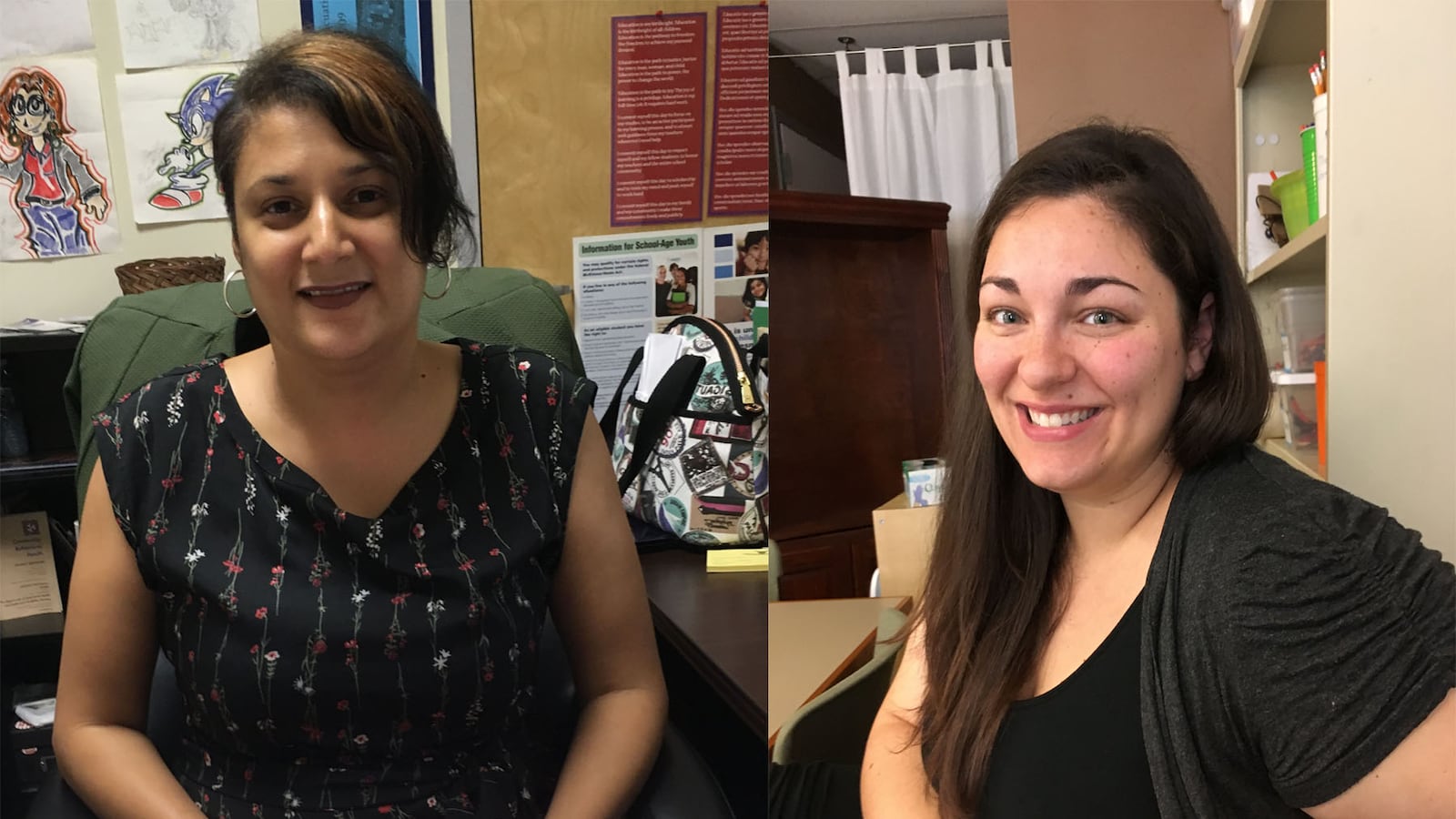This article was originally published in The Notebook. In August 2020, The Notebook became Chalkbeat Philadelphia.
At Smedley Elementary School in Frankford, as in many Philadelphia schools in high-crime areas, faculty and administrators work to make sure that they give students a safe harbor from potential violence outside.
The building has only one entrance, lockdowns are practiced, and students can wait indoors at dismissal time. If an incident occurs near the school, parents are notified by text when possible.
And to help students deal with what they or their friends and relatives may have experienced outside, Smedley, a former District school that is now operated by Mastery Charters, works with the Uplift Center for Grieving Children to help students deal with trauma resulting from violence.
“Almost every kid has been exposed,” says social worker Nicole Enriquez. “It’s wild.”
At Boys’ Latin High School in West Philadelphia, in a less-violent neighborhood, counselor Yolanda Morales hadn’t thought of having the center offer workshops.
But after two students were killed last year in their neighborhoods – the charter school draws its enrollment from around the city – Morales brought in the center’s staff to help.
“It was a heavy hit for us,” Morales says. “We knew we had to act fast.”
Read: Grief groups help children cope with all-too-common trauma and violence
Meghan Szafran, the center’s director of community-based planning, says the agency has added staff and increased its offerings in response to two realities of education in Philadelphia:
- Only in very few schools are students untouched by neighborhood violence.
- No matter how safe the school might be, the violence that students may experience in their neighborhoods causes trauma that makes teaching and learning harder.
Grief discussion groups are part of an overall strategy to help schools and students deal with the effects of neighborhood violence.
“The groups are powerful because it’s a place for the students to find they’re not alone,” Szafran says.
Other elements are:
- Being alert from the opening bell about any child coming into school dealing with a particularly difficult issue.
- Making sure that every student has at least one adult in the school that he or she can confide in.
- Being particularly careful to take a trauma-sensitive approach to students scarred by the effects of violence.
“The first thing we do is check in with our kids in the morning when they’re walking in the door,” says Sara Schwartz, director of social services at CB Community School. “If they’re not ready to learn, we’re understanding why. Often that can be from violence in the community.”
School counselors and psychologists say that finding a trusted adult in the schools is important because for many students, that’s the best option.
Messer spoke of a student who bonded with one teacher. “When she was in close proximity to that person, you could just see the stress reduce,” she said.
Read: The Center for Grieving Children’s eight-week curriculum
Lauren Wheeler, lead clinician at Ludlow Elementary School, says that the person might not be a teacher or counselor. “It could be the lunch lady.”
Meghan Smith, a counselor at Ludlow, says that even if the child is living with an intact family, they may not be discussing the impact of violence there.
“It may be stigma,” she says. “A lot of times, a family will say, ‘We’ll deal with it in our own way. We don’t need outsiders telling us what do.’
“A lot of families think that talking about it may make the grieving worse. But that’s not the case. I’ve never seen [the effects of trauma] get worse by talking.”
Smith says she reached out to the center four years ago after a 3rd-grade girl’s brother was killed.
Students are encouraged to bring in mementos of their loved one to put in a memory box.
When students in the grief groups fill the memory boxes, Smith says, “It gives us an insight into what they lost. “
One student brought a funeral program, another his late father’s sunglasses, she says. “It gives us an insight into who they are.”


